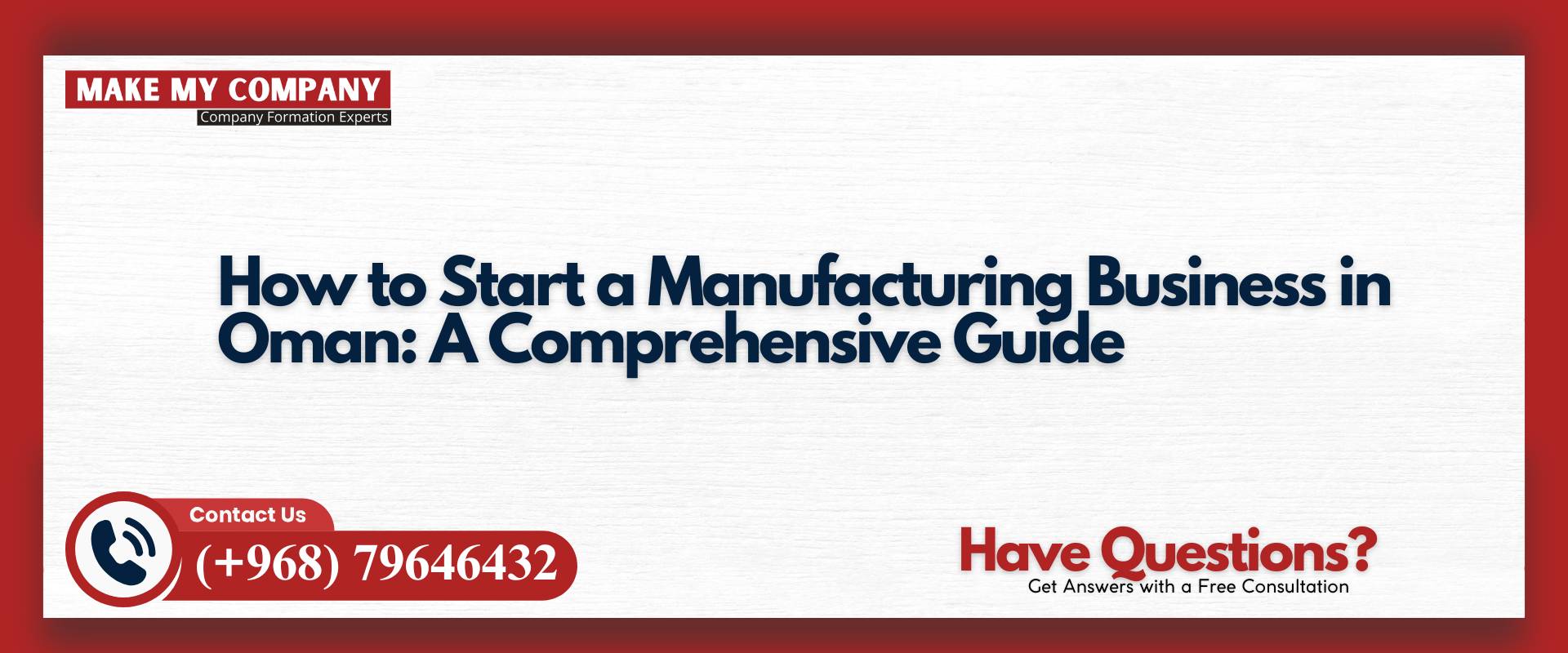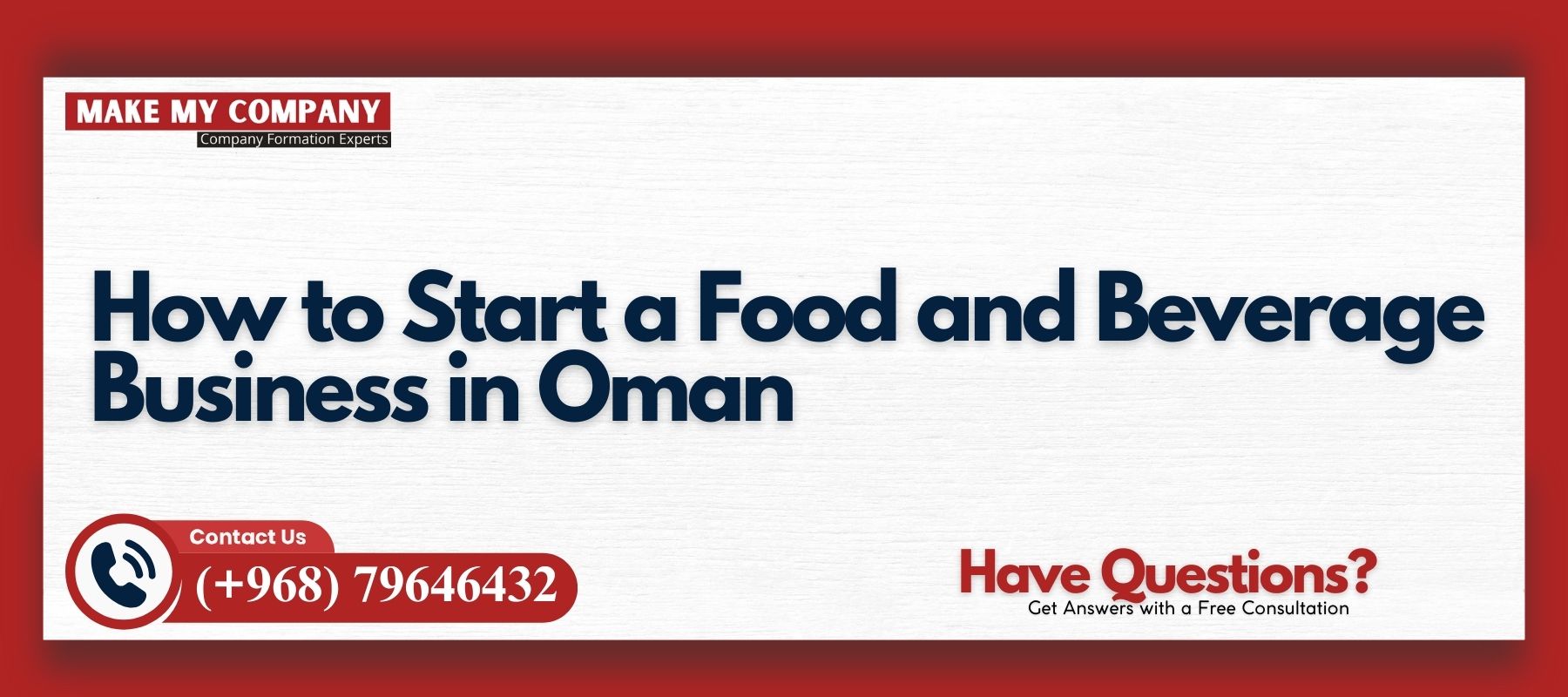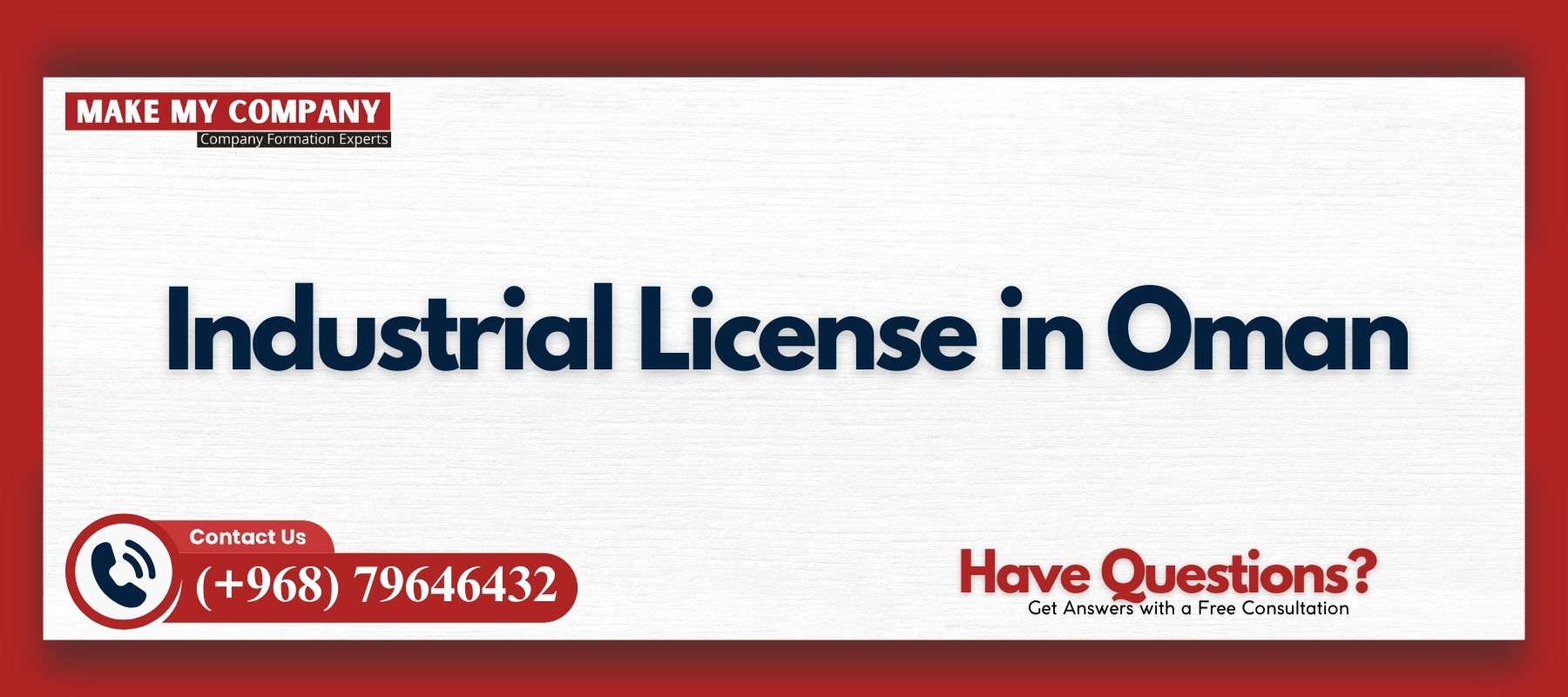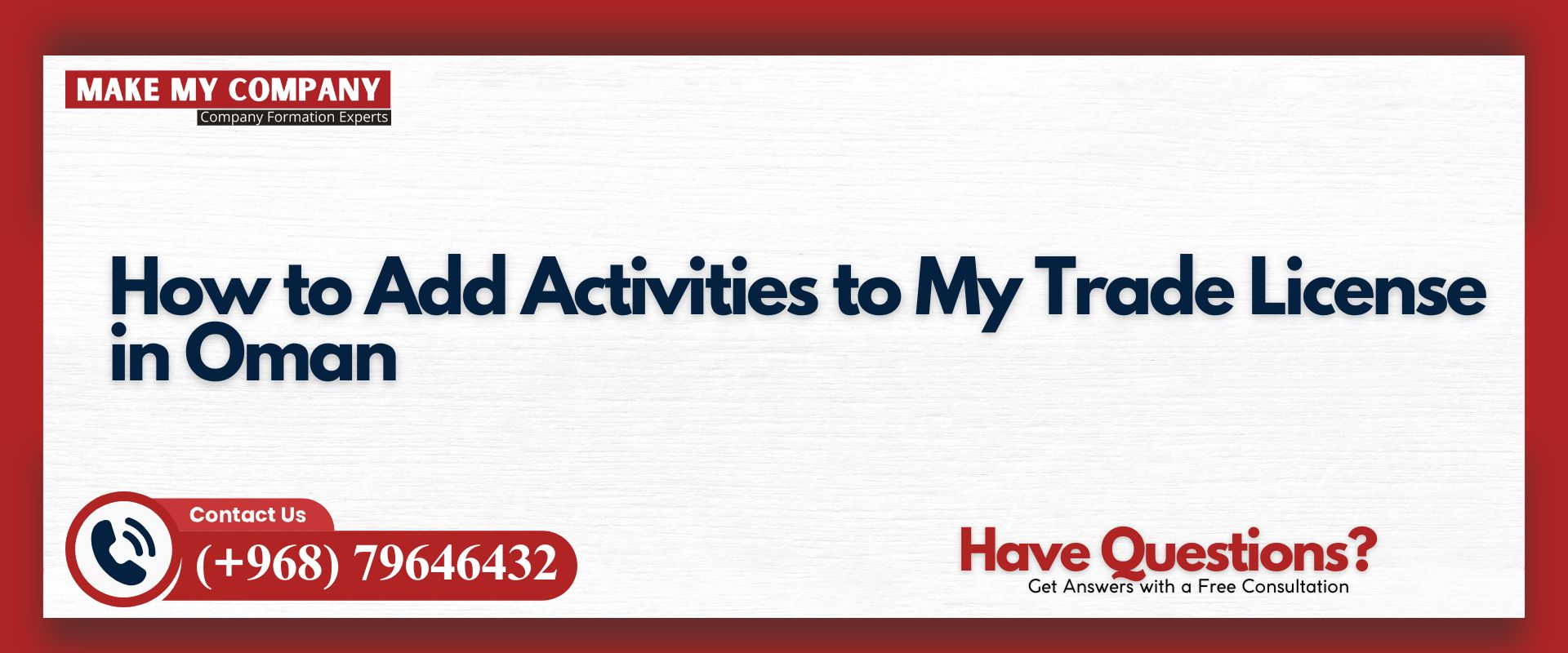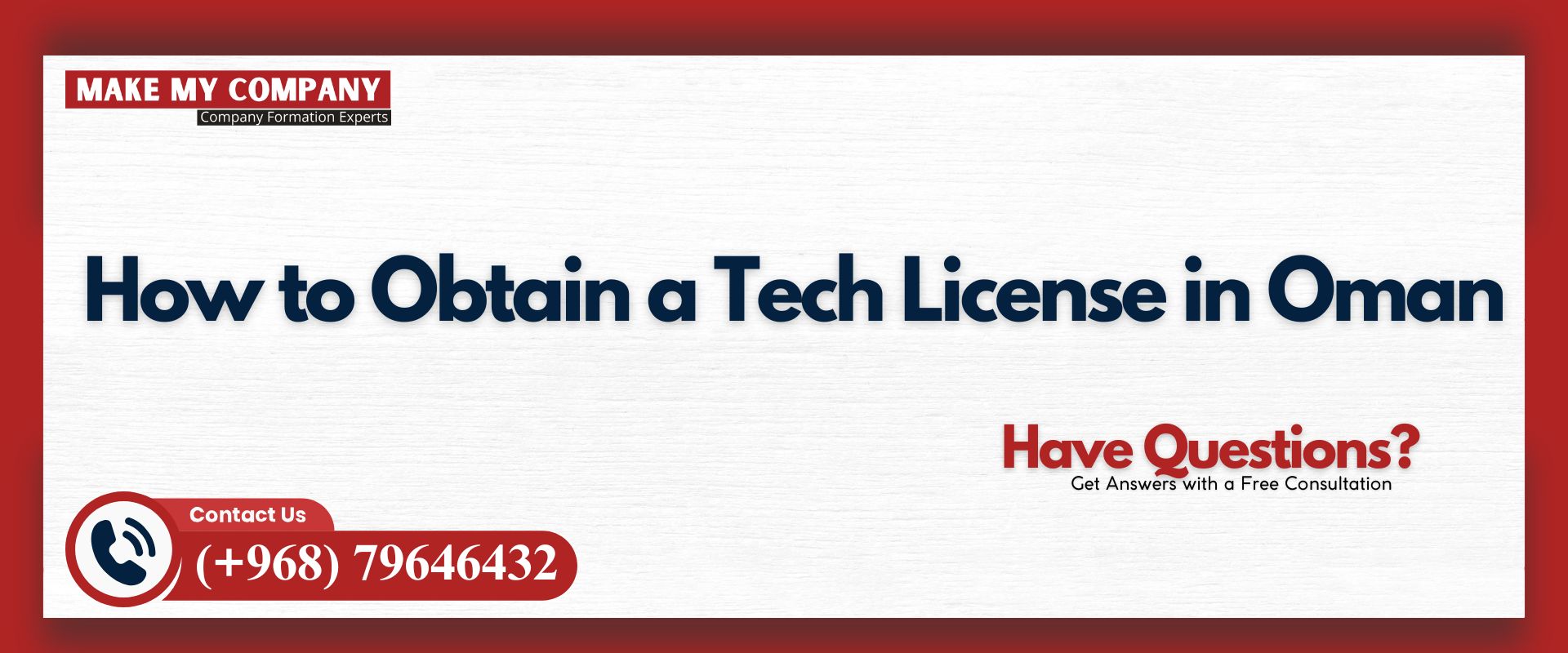Oman has strategically positioned itself as an attractive manufacturing hub in the Middle East, offering international investors and local entrepreneurs excellent opportunities to establish industrial operations. The Sultanate’s Vision 2040 economic diversification strategy prioritizes manufacturing sector development, reducing dependence on oil revenues while building a sustainable, knowledge-based economy. With modern infrastructure, competitive advantages, government incentives, and strategic geographic location, manufacturing in Oman presents compelling prospects for entrepreneurs seeking to capitalize on the region’s growing industrial sector.
This comprehensive guide provides detailed information about starting a manufacturing business in Oman, covering regulatory requirements, licensing procedures, strategic considerations, costs, and practical steps to help investors successfully establish production operations in this dynamic market.
Table of Contents
Understanding Oman’s Manufacturing Sector Opportunities
Oman’s commitment to industrial development has created favorable conditions for manufacturing businesses across diverse sectors. Government initiatives, infrastructure investments, and supportive policies make the Sultanate increasingly attractive for industrial investors.
Economic Diversification and Government Support
The Omani government actively promotes manufacturing through its economic transformation agenda. National strategies emphasize reducing oil dependency, creating employment opportunities for Omani citizens, developing value-added industries, attracting foreign investment and technology transfer, and building sustainable industrial capacity. These priorities translate into tangible support for manufacturing businesses including financial incentives, streamlined licensing procedures, infrastructure development, and market access facilitation.
Strategic Geographic Advantages
Oman’s location provides manufacturers with strategic benefits including proximity to major Asian, African, and European markets, access to high-quality ports in Sohar, Duqm, and Salalah, established logistics networks facilitating efficient cargo movement, free trade agreements with multiple countries, and connectivity to regional markets through established trade routes. This positioning enables manufacturers to serve both domestic and international markets efficiently.
Competitive Cost Structure
Manufacturing operations in Oman benefit from competitive operational economics including subsidized industrial electricity and water rates, competitive labor costs compared to developed markets, affordable industrial land in designated estates, tax incentives and customs exemptions on equipment and raw materials, and access to natural gas at favorable prices for energy-intensive industries. These cost advantages enhance profitability and investment returns.
Priority Manufacturing Sectors
The government particularly encourages manufacturing in strategic sectors including food processing and packaging, pharmaceuticals and medical supplies, construction materials and cement, petrochemicals and plastics, metal fabrication and aluminum, automotive components, textiles and garments, furniture and wood products, electronics and electrical equipment, and renewable energy components. Priority sectors receive enhanced support and expedited licensing procedures.
Key Advantages of Manufacturing Business in Oman
Entrepreneurs choosing to set up manufacturing business operations in Oman gain access to numerous competitive advantages supporting success and profitability.
Infrastructure and Industrial Estates
Oman offers world-class industrial infrastructure through dedicated manufacturing zones including Sohar Industrial Port with petrochemical clusters and port access, Duqm Special Economic Zone with extensive land availability and strategic location, Rusayl Industrial Estate near Muscat serving the capital region market, Knowledge Oasis Muscat for technology and knowledge-based manufacturing, and Al Mazunah Free Zone facilitating regional trade. These estates provide ready infrastructure, utility connections, one-stop-shop services, and clustering benefits.
Access to Raw Materials
Manufacturers benefit from access to local and regional raw materials including petrochemical feedstock from Oman’s oil and gas sector, minerals and aggregates for construction materials, agricultural products for food processing, imported raw materials through efficient ports, and recycled materials through growing circular economy initiatives. Reliable raw material availability reduces supply chain risks and costs.
Skilled and Trainable Workforce
Oman provides manufacturers with access to educated workforce from strong educational systems, technical and vocational training institutions, government support for workforce development, relatively lower labor costs than developed markets, and cultural work ethics emphasizing reliability and diligence. Manufacturers investing in training develop capable teams supporting quality production.
Export Opportunities and Market Access
Manufacturers in Oman can access diverse markets including domestic Omani market of over 4.5 million consumers, GCC markets through customs union agreements, free trade agreement partner countries, African markets via Duqm and Salalah strategic positioning, and Asian markets through established shipping routes. Export-oriented manufacturers benefit from government export promotion support.
Financial Incentives and Support
The government provides manufacturing businesses with various incentives including customs duty exemptions on imported equipment and machinery, reduced utility tariffs for industrial consumers, income tax exemptions for specified periods in certain zones, access to development financing through Oman Development Bank, support for research and development activities, and grants for training and Omanization programs. These incentives significantly reduce establishment and operational costs.
Regulatory Framework for Manufacturing Business Licensing in Oman
Setting up a manufacturing company in Oman involves navigating a comprehensive regulatory framework ensuring compliance with commercial, industrial, environmental, and safety standards.
Ministry of Commerce, Industry and Investment Promotion
Public Authority for Investment Promotion and Export Development
Ministry of Housing and Urban Planning
Royal Oman Police – Civil Defence
Sector-Specific Regulatory Bodies
Certain manufacturing sectors require additional regulatory approvals. Food manufacturing needs Oman Food and Drug Authority (OFDA) clearances for food safety compliance. Pharmaceutical production requires Ministry of Health licenses and Good Manufacturing Practice certifications. Chemical manufacturing may need Authority for Public Services Regulation permits. Understanding sector-specific requirements ensures comprehensive compliance.
Step-by-Step Process to Start Manufacturing Business in Oman
Establishing manufacturing operations requires systematic progression through planning, regulatory procedures, facility development, and operational preparations.
Conduct Comprehensive Market Research
Begin with thorough market analysis evaluating product demand and market size, competitive landscape and positioning opportunities, pricing strategies and margin potential, raw material availability and costs, distribution channels and logistics, export opportunities and international markets, regulatory requirements and compliance complexity, and investment requirements versus expected returns. Professional market research provides foundations for viable business planning.
Develop Detailed Business Plan
Create comprehensive business plan outlining manufacturing concept and product specifications, production processes and technology requirements, facility and equipment specifications, raw material sourcing strategies, target markets and sales channels, organizational structure and staffing plans, financial projections and funding requirements, quality control and assurance systems, environmental management approaches, and risk assessment and mitigation strategies. Thorough planning demonstrates project viability to authorities and investors.
Select Appropriate Business Structure
Determine legal entity structure suitable for manufacturing operations. Options include Limited Liability Company (LLC) for corporate manufacturing with multiple shareholders, Joint Stock Company (SAOG or SAOC) for large-scale industrial operations, Branch Office for international manufacturers establishing Oman presence, or Free Zone Company in designated zones like Sohar or Duqm. Each structure has different ownership rules, capital requirements, and operational implications. Consider investment scale, ownership preferences, and operational scope when selecting structure.
Choose Industrial Location
Identify appropriate location for manufacturing facility considering proximity to raw materials and suppliers, access to target markets and distribution channels, availability of skilled workforce, utility infrastructure and capacity, transportation and logistics connectivity, land costs and lease terms, clustering benefits with related industries, and environmental suitability. Locations in established industrial estates provide ready infrastructure and support services simplifying setup.
Secure Land Allocation
Apply for industrial land through the Ministry of Housing and Urban Planning or relevant free zone authority. Submit project proposals, company documentation, technical specifications, and land requirement details. Authorities evaluate applications based on project viability, investment commitment, employment creation, technology transfer, and alignment with development priorities. Upon approval, sign land lease agreements securing your manufacturing site.
Register Business with MoCIIP
Apply for commercial registration with MoCIIP by submitting business information and shareholder details, proposed manufacturing activities, capital deposit proof meeting minimum requirements, land allocation documents, and registration fees. MoCIIP issues Commercial Registration certificate establishing your legal business entity and authorizing proceeding with industrial licensing.
Obtain Environmental Clearance
Submit environmental impact assessment to the Environment Authority detailing production processes and emissions, wastewater generation and treatment plans, solid waste and hazardous waste management, air quality impacts and mitigation measures, resource consumption and conservation strategies, and emergency response procedures. Environment Authority reviews assessments, may request modifications or additional measures, and issues environmental clearance upon satisfactory compliance.
Apply for Industrial License
Submit industrial license application to MoCIIP providing detailed project description and technical specifications, production capacity and output projections, equipment and machinery lists, raw material requirements and sourcing plans, employment projections and Omanization commitments, quality control procedures, environmental compliance documentation, and applicable fees. The Industrial License in Oman authorizes your manufacturing activities and specifies permitted production scope.
Obtain Building Permits
Apply for building permits from the Ministry of Housing and Urban Planning submitting architectural and engineering drawings, structural designs and calculations, utility connection plans, safety system specifications, and environmental compliance confirmations. Begin facility construction only after receiving proper building permits. Conduct construction in compliance with approved plans and building codes.
Develop Manufacturing Facility
Construct or prepare factory meeting all technical and regulatory requirements including production halls with appropriate specifications, machinery installation and commissioning, utility connections for electricity, water, and gas, environmental control systems and emissions treatment, wastewater treatment facilities, waste storage and management areas, fire safety and suppression systems, staff facilities and administrative offices, quality control laboratories where required, and security systems and perimeter controls.
Secure Civil Defence Approval
Schedule inspection with Royal Oman Police – Civil Defence once the facility is ready. Inspectors evaluate fire safety equipment and systems, emergency exits and evacuation procedures, hazardous material storage compliance, electrical safety standards, and overall facility safety. Address any deficiencies and obtain Civil Defence clearance before commencing production.
Obtain Final Operational Clearances
Secure remaining clearances including final MoCIIP inspections and approvals, sector-specific regulatory clearances if applicable, municipality operational permits, utility activation and connection confirmations, and any additional authority approvals. Compile all clearances demonstrating full regulatory compliance before production commencement.
Complete Workforce Hiring and Training
Recruit qualified personnel for production, quality control, maintenance, administration, and management roles. Process work permits through the Ministry of Labour for expatriate employees. Provide comprehensive training on production processes, safety procedures, quality standards, and equipment operation. Develop a capable workforce supporting quality manufacturing operations.
Commission Equipment and Begin Production
Commission and test all production equipment ensuring proper operation. Conduct trial production runs verifying quality, efficiency, and safety. Implement quality control systems monitoring production standards. Begin commercial production gradually ramping up to full capacity. Monitor operations continuously addressing any issues promptly.
How Much Does It Cost To Start A Manufacturing Business in Oman
Understanding comprehensive cost structures enables proper financial planning for manufacturing ventures.
Land and Facility Costs
Industrial land lease costs vary by location. Sohar Industrial Port charges approximately OMR 0.50-2 per square meter annually. Duqm Special Economic Zone offers competitive rates from OMR 0.25-1 per square meter annually. Rusayl Industrial Estate near Muscat costs OMR 1-3 per square meter annually. Factory building construction costs range from OMR 50-200 per square meter depending on specifications and requirements.
Licensing and Registration Fees
Commercial registration with MoCIIP costs OMR 200-500. Industrial license fees range from OMR 500-2,000 depending on manufacturing scale. Environmental impact assessment costs OMR 1,000-10,000 based on project size. Building permits cost OMR 500-3,000. Sector-specific approvals add OMR 200-2,000. Professional consultancy assistance ranges from OMR 2,000-10,000 for comprehensive services.
Machinery and Equipment Investment
Production equipment costs vary dramatically by industry and scale. Light manufacturing machinery may cost OMR 50,000-500,000. Medium industrial equipment typically ranges from OMR 500,000-5 million. Heavy industrial machinery for sectors like petrochemicals can exceed OMR 5-50 million. Include installation, commissioning, and spare parts in equipment budgets.
Utility Connection and Setup Costs
Electricity substation connections cost OMR 10,000-200,000 depending on power requirements. Water supply infrastructure requires OMR 5,000-50,000. Gas connections where applicable cost OMR 10,000-100,000. Wastewater treatment facilities range from OMR 20,000-500,000 based on capacity and treatment requirements.
Working Capital Requirements
Initial raw material inventory costs OMR 20,000-500,000+ depending on production scale. Staff recruitment, training, and initial payroll require OMR 10,000-200,000. Initial marketing and market development need OMR 5,000-50,000. Maintain working capital reserves covering 3-6 months operational expenses before achieving positive cash flow.
Total Investment Estimates
Small-scale light manufacturing typically requires OMR 100,000-500,000 total investment. Medium industrial operations generally need OMR 500,000-5 million. Large manufacturing facilities particularly in heavy industries require OMR 5-100+ million depending on sector and scale. These estimates include land, construction, equipment, licensing, and working capital.
Essential Documentation for Manufacturing Business in Oman
Comprehensive documentation supports licensing applications and demonstrates operational preparedness.
Valid passports of all shareholders
Residence permits of all shareholders
Educational certificates of key technical personnel
Professional experience documentation
Detailed project feasibility study
Comprehensive business plan with financial projections
Technical specifications for production processes
Facility design and layout plans
Environmental impact assessment report
Land allocation or lease documents
Building permit applications and approvals
Equipment specifications and purchase documentation
Quality control procedures manual
Health and safety protocols
Waste management plans
Omanization and training plans
Financial statements or projections
Bank reference letters
Source of funds documentation
Memorandum of Association for companies
Board resolutions authorizing project
Insurance policy proposals
Sector-specific compliance documentation
Civil Defence safety approvals
How Make my Company Supports You To Start A Manufacturing Business in Oman
Navigating Oman’s manufacturing business establishment procedures, coordinating with multiple authorities, and ensuring comprehensive compliance requires specialized expertise and established regulatory relationships. Make my Company provides end-to-end support as experienced Business Setup in Oman consultants assisting industrial investors throughout their manufacturing venture journey.
Our experienced team guides you from initial feasibility through operational commencement. We handle comprehensive feasibility studies and market analysis, business structure optimization recommendations, land identification and allocation in appropriate industrial zones, commercial registration with MoCIIP, detailed project documentation preparation, industrial license applications, environmental impact assessments and Environment Authority approvals, building permit processing with Ministry of Housing and Urban Planning, coordination with Public Authority for Investment Promotion and Export Development (Ithraa) for investment facilitation, sector-specific regulatory approvals, Civil Defence safety clearances, work permit processing through Ministry of Labour, and comprehensive compliance management.
Make my Company maintains established relationships with the Ministry of Commerce, Industry and Investment Promotion, Public Authority for Investment Promotion and Export Development, Environment Authority, Ministry of Housing and Urban Planning, Ministry of Labour, Royal Oman Police – Civil Defence, sector regulators, and relevant authorities. Our expertise ensures efficient processing, full compliance with industrial and environmental standards, transparent costs, and timely licensing enabling rapid implementation.
We understand manufacturing sector challenges including substantial capital requirements, complex regulations, environmental compliance, technical specifications, and workforce development. Whether establishing small-scale light manufacturing or large industrial complexes, Make my Company delivers customized solutions matching your industry, investment scale, and requirements.
Beyond establishment, we provide annual license renewals, environmental monitoring assistance, expansion consulting, quality certification support, and strategic advisory optimizing operations in Oman’s manufacturing sector.
Contact us today for consultation discovering how Make my Company streamlines your manufacturing business setup, coordinates with authorities, and enables focusing on successful production operations while we handle regulatory complexities of establishing your manufacturing business in Oman’s supportive industrial environment.



